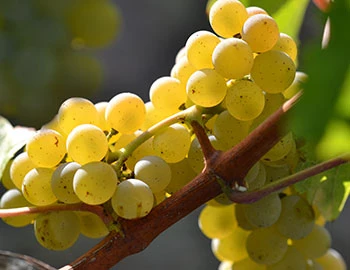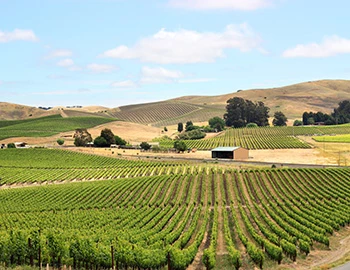
Sauvignon Blanc l'Après-Midi 2017
AVA, Peter Michael Winery, 750 ml

| Grape variety: | Sauvignon Blanc |
| Producer: | Peter Michael Estate |
| Origin: | USA / California / Napa Valley |
| Other vintages: |
Description
The L’Après-Midi is a superb expression of the estate terroir. Intense and multi-layered, the bouquet is dominated by passion fruit, mangosteen, guava, yellow nettle blossom, honeysuckle, lemon, lime, white peach and white currant with touches of honey and candied anise. Rich and zesty, the flavors are reminiscent of the aromas with additional fresh almond and nougat notes. The strong mineral background, a stamp of the Knight Valley Estate, balances the overall richness, giving a superb refinement. The finish is layered, very long and elegant. The wine will benefit from two years of cellaring and will age gracefully for a decade or more.
Best wine trader for matured wines 2024

Baur au Lac Vins was honoured by Falstaff as the best wine merchant for mature wines. Thank you very much for the award!
Attributes
| Origin: | USA / California / Napa Valley |
| Grape variety: | Sauvignon Blanc |
| Ripening potential: | 2 to 10 years |
| Drinking temperature: | 10 to 12 °C |
| Food Pairing: | Bouillabaisse, Fresh water fish with cream sauce, Hearty stew with pulses, Goat's cheese |
| Volume: | 14.5 % |
| Note: | Contains sulphites |
Peter Michael Winery
In the 1970s, Sir Peter Michael came to California as a young engineer and discovered the emerging wine world of California, with some excellent names already drawing international attention.
This awakened his desire to try something new. The search for a suitable piece of land ended in the secluded Knights Valley on the western slope of Mount St. Helena, in the east of Sonoma County, north of Napa Valley. The first vines were planted in 1983. His son Paul was helping out at the time and was full of enthusiasm, although the rows of vines were extremely difficult to set up on the very steep (inclines of up to 40%), stony layers of primarily volcanic rock. Later, Sir Peter was able to buy more plots of land on the coast and in Oakville, in Napa: Fort Ross-Seaview, with perfect growing conditions for Pinot Noir, and Au Paradis, planted with Cabernet Sauvignon and Cabernet Franc.

Sauvignon Blanc
The Sauvignon blanc can be recognized with your eyes closed. Its typical bouquet is marked by green notes: freshly cut grass, tomato bunches, gooseberry. Citrus fruits, cassis and flint join into the mix. In warmer latitudes it also shows exotic aromas, such as passion fruit. Its acidity is decidedly lively. In all likelihood, it comes from the Loire Valley, where it is vinified in Pouilly-Fumé and Sancerre in its purest form: varietally, and without timber. In the 18th century, it found its way to Bordeaux. Ambitious producers assemble it there with Sémillon into substantial whites, which are aged in oak barrels. The Sauvignon blanc has been a sensational success in the past 20 years in New Zealand. With its refreshing sweet-and-sour style, winemakers from down under have conquered the world. The rich Sauvignons from Styria and crisp examples of South Tyrol and Friuli are worth mentioning as well. It pairs with anything from the sea. Or do it like they do on the Loire, and enjoy it with goat cheese.

California
California: Lots of fruit and ripe tannins
Around 90 percent of the wine produced in the USA comes from California. The Napa Valley, situated roughly 100 kilometers north of San Francisco, is the most prominent wine region in the western hemisphere. California vintners first caused an international sensation with Chardonnay and Cabernet Sauvignon. Today, however, superior wines are also produced from Pinot Noir, Syrah and other varieties. California’s wine country shows more variety today than ever before.

USA
USA - Yes, they can!
The United States is the third-largest nation on the planet in terms of both land area (after Russia and Canada) and population (after China and India). Every conceivable climate zone can be found in the US, from hot deserts to arctic frost. Thanks to immigration from all over the world, the US is probably the most multicultural country on the planet. Thus it has the ideal conditions for producing internationally recognized wine.


